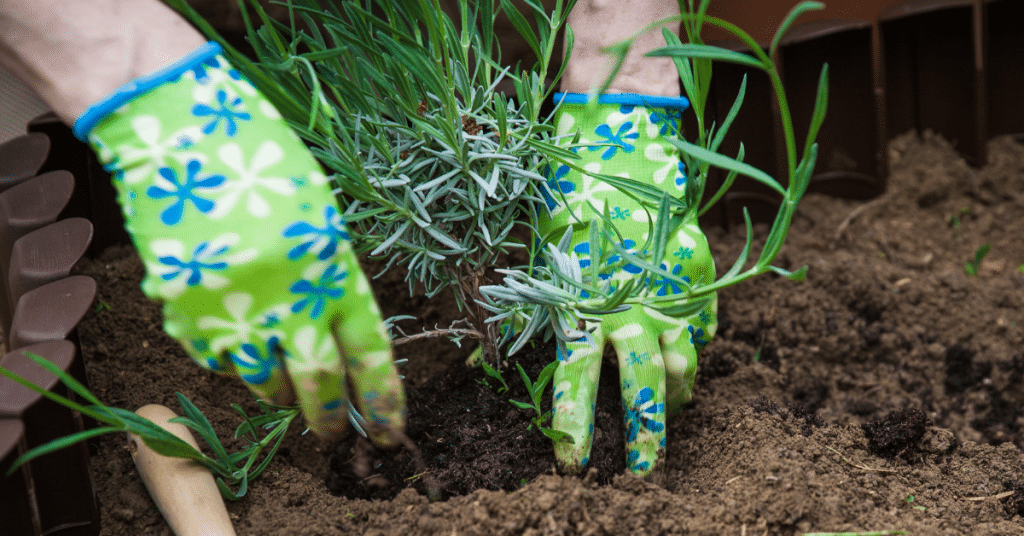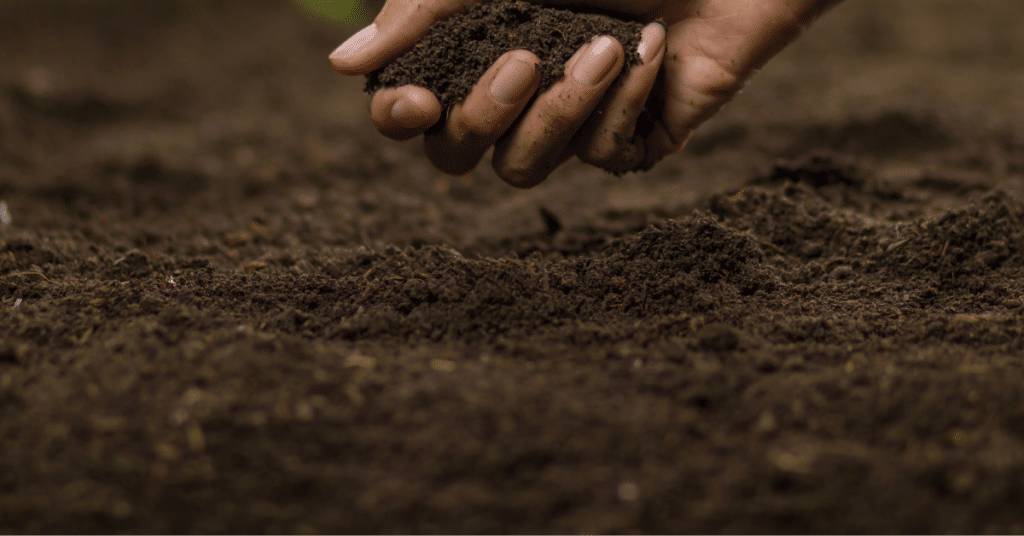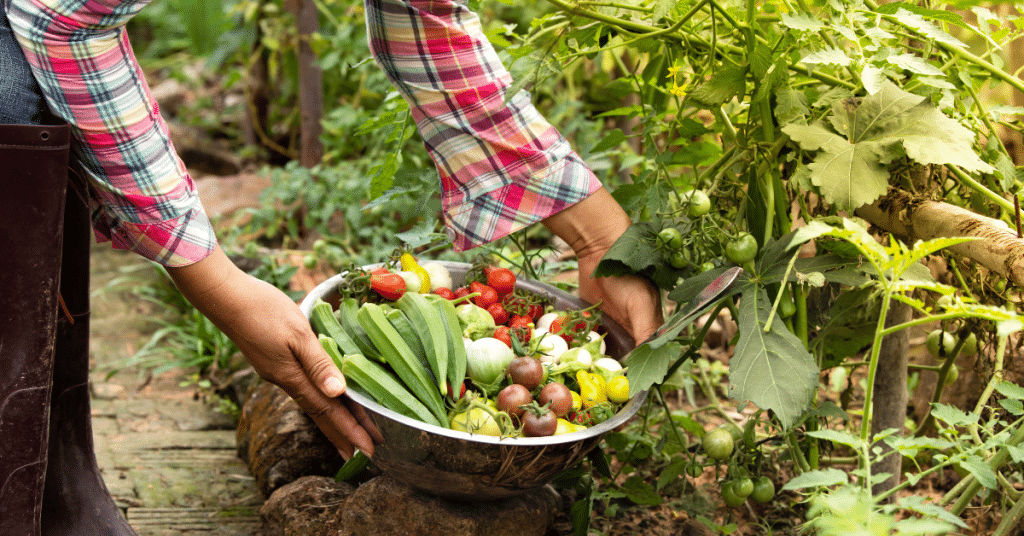
Getting Started with Organic Gardening
Hey there, fellow green thumbs! Ready to embark on an exciting journey into the world of organic gardening for beginners? Whether you have a sprawling backyard, sunny windowsill, or small garden space, this guide will help you kick-start your gardening adventure. Let's dig in and discover how you can create a thriving organic garden for beginners with our gardening tips!
Choosing the Right Location for Your Vegetable Garden
Before you jump headfirst into planting, let's talk about finding the perfect spot for your organic garden. Sunlight is the key ingredient for your plants' success, so scout for an area that receives at least six hours of direct sunlight daily. Remember, happy plants are sun-kissed plants!
Consider the soil quality too. Does it drain well? Is it rich in organic matter? If your soil is heavy clay or sandy, fret not! You can amend it with compost, aged manure, or organic matter to create a healthy foundation for your garden to thrive.
Essential Tools and Materials for Vegetable Gardening for Beginners
Gardening doesn't require a shed full of fancy gadgets. You'll be ready to get your hands dirty with just a few essential tools. Grab a sturdy pair of garden gloves to protect your hands, a trusty shovel for digging, a rake for smoothing the soil, and a watering can.
Don't forget the organic essentials! Compost, organic soil enhancer, and organic fertilizers will naturally nourish your plants without harsh chemicals. They're like superhero fuel for your green leafy friends. Keep them handy to give your plants the TLC they deserve.
Gardening for Beginners Tips on Preparing the Garden Soil

Picture your healthy soil as a cozy home for your plants. Like a good foundation supports a house, healthy and good garden soil sets the stage for your garden's success. Start your soil test by testing your soil's pH level to understand its acidity or alkalinity. You can find DIY soil testing kits at your local garden center or opt for professional testing.
Based on the test results, you can adjust the pH levels by adding an organic soil enhancer or lime to reduce acidity or sulfur to decrease alkalinity. Mixing in organic matter, such as compost or well-rotted manure, will improve the structure of your garden soil, drainage, and fertility. It's like giving your plants a comfy raised bed to grow in!
Planning Your Vegetable Garden Layout
Now that you have the perfect location and nourishing soil, it's time to channel your inner landscape architect! Planning your garden beds will help maximize the space and optimize plant growth. Additionally, if you have limited space, you can use raised beds, container gardening and vertical gardening.
Consider companion planting, where certain plants help each other by deterring pests or improving soil quality. For example, pairing basil with tomato plants repels pests while enhancing flavor. Rotate your crops yearly to prevent soil depletion and keep pests at bay. Plus, it adds a bit of variety to your raised beds!
With these tips in mind, start sketching your garden design. Picture the vibrant colors, the mingling scents, and the joyful harmony of nature. It's time to bring your vision to life!
That's a wrap for the first section of our ultimate guide to organic vegetable gardening for beginners! We've laid the groundwork for your green adventure, from choosing the right location and tools to preparing the soil and planning your garden layout. Stay tuned for the next sections, where we'll dive into planting and maintaining your organic garden and discover tips for harvesting and troubleshooting common issues.
Remember, gardening is a journey filled with surprises and rewards. So, grab your gloves, unleash your creativity, and sow the seeds of organic goodness together!
Planting and Maintaining an Organic Gardening for Beginners
Congratulations on reaching the second section of our ultimate guide to organic gardening for beginners! Now that you've prepared the groundwork, it's time to get your hands dirty and start planting. Let's dive into the beautiful world of planting and maintaining your organic vegetable gardens.
Selecting Organic Seeds or Seedlings
When it comes to organic gardening, choosing the right seeds or seedlings is crucial. Look for organic, non-GMO seeds or certified organic seedlings. This ensures that your plants are free from harmful chemicals and have been grown with care for the environment.
You can find various organic seeds or seedlings at your local garden centers, nurseries, or online. Explore different options and select plants that suit your taste, climate, and gardening goals. Remember to start with a few plants and then gradually increase accordingly. From vibrant veggies to fragrant herbs, the choices are endless!
Gardening for Beginners Planting Techniques
Now that your seeds or seedlings are ready, it's time to plant them with love and precision. Follow these steps to ensure your plants grow:
- Prepare the soil: Ensure the soil is moist but not waterlogged. Remove any weeds or debris from the planting area or garden bed.
- Dig the right hole: Dig a hole slightly larger than the root ball of your seedling or the recommended depth for your seeds. Loosen the soil at the bottom to promote root growth.
- Planting depth: Gently place the seedling or young plants in the hole, ensuring it's at the same depth as in its original container. Plant seeds and follow the packet instructions for proper planting depth.
- Backfill and firm the soil: Fill the hole with soil, gently pressing it around the plant's base. Avoid compacting the soil too much, as it may hinder root growth.
- Water thoroughly: Give your newly planted seedlings or seeds a good drink of water. This helps settle the soil and provides essential moisture for their initial growth.
Organic Pest Control
Ah, pests! They may be tiny, but they can cause big trouble in your garden. Fear not, though, because organic gardening has clever tricks to keep those pests at bay.
Companion planting is your secret weapon. Some plants naturally repel pests, so interplant them with veggies or herbs. For example, marigolds deter aphids, while mint repels cabbage moths. It's like having little bodyguards defending your garden!
You can also use physical barriers like row covers or netting to protect your plants from unwanted visitors. And don't forget about inviting beneficial insects like ladybugs and lacewings to the party. Also checking your plants and garden regularly and handpick giant insects that feast on your garden.
Watering and Irrigation of Garden for Beginners
Proper watering is essential for the success of your garden. Thus having the right garden watering aid is important. Remember, watering deeply and less frequently is better than sprinkling them lightly daily. Deep watering encourages roots to grow deeper into the soil, making plants more resilient.
Water your plants early in the morning or late in the afternoon to minimize evaporation. Avoid watering during the hottest part of the day, as the sun can quickly evaporate the water before it reaches the roots. Keep an eye on the moisture levels of your soil and adjust your watering schedule accordingly.
Organic Fertilization
To keep your plants healthy and thriving, they need proper nourishment. Organic fertilizers are the superheroes of the gardening world! They provide essential nutrients to your plants without harmful chemicals.
Compost is the king of organic fertilizers. It enriches the soil, improves its structure, and releases nutrients slowly. You can also use organic fertilizers made from natural ingredients like bone meal, blood meal, or fish emulsion. These fertilizers feed your plants while maintaining a healthy balance in the soil.
That's it for the second section of our ultimate guide to organic gardening for beginners! You've learned about selecting organic seeds or seedlings, planting techniques, organic pest control, watering and irrigation, and the wonders of organic fertilization. Stay tuned for the final section, where we'll explore the exciting realms of harvesting and troubleshooting common gardening issues.
Remember, your garden is a living, breathing ecosystem. Please treat it with care, embrace the joys of nurturing, and watch it flourish under your green thumb!
Troubleshooting Common Issues
Welcome to the final section of our ultimate guide to organic gardening for beginners! You've come a long way on your green journey, and now it's time to reap the rewards of your hard work. In this section, we'll explore the art of harvesting and tackle common issues that may arise in your organic garden.
Recognizing Signs of Plant Maturity
One of the most exciting moments for any gardener is the arrival of harvest time. But how do you know when your plants are ready to be picked? Different plants have different signs of maturity, so let's take a look at a few examples:
- Vegetables: Check for vibrant color, firmness, and size. For example, ripe tomatoes will have a deep red color and yield slightly to gentle pressure. For root veggies, the leaves and stems are mostly turning brown.
- Fruits: Give them a gentle tug. If they come off the plant easily, they're likely ready to be harvested. Fruits like strawberries and melons often emit a sweet fragrance when ripe.
- Herbs: Harvest them when the leaves are lush and fragrant. Snip off the stems just above a set of leaves to encourage further growth.
Common Garden Issues and Solutions
Even the most experienced gardeners encounter challenges in their organic gardens. Let's explore some common issues and their organic solutions:
- Diseases: Keep a vigilant eye for signs of disease, such as discoloration, spots, or wilting leaves. Preventive measures like crop rotation, proper spacing, and providing good air circulation can help reduce the risk of diseases. If a problem arises, organic treatments like neem oil or copper fungicides can offer relief.
- Nutrient Deficiencies: Your plants may lack essential nutrients if they display yellowing leaves or stunted growth. Organic fertilizers like compost, seaweed extract, or fish emulsion can help replenish the soil's nutrient levels and support plant health.
- Weeds: Weeds are nature's opportunists but can compete with your plants for resources. Regular weeding and mulching can help suppress weed growth. Pull weeds by hand or use a garden hose to keep them at bay, avoiding chemical herbicides.
Remember, harvesting early is better than letting your produce become overripe. Harvesting regularly encourages continuous production and keeps your plants healthy.
Gardening for Beginners Harvesting Techniques

Proper harvesting techniques ensure that you gather your bounty without damaging your plants. Here are a few tips to keep in mind:
- Use sharp garden shears or scissors to make clean cuts and minimize damage to the plant.
- Harvest in the early morning when the plants are well-hydrated, resulting in crisper and fresher produce.
- Be gentle and handle your fresh vegetables with care. Treat them like delicate treasures to preserve their quality.
- Don't forget to celebrate each harvest! Share your freshly picked produce with friends and family, or whip up a delicious meal with homegrown ingredients.
Storing and Preserving Your Harvest
You've put in the hard work, and now it's time to savor the fruits of your labor. Here's how you can store and preserve your harvest:
- Refrigeration: Many vegetables and fruits can be stored in the refrigerator to maintain freshness. Place them in perforated bags or containers to allow for proper airflow.
- Freezing: Some produce, like berries and green beans, can be frozen later. Blanch them briefly in boiling water, then plunge them into ice water before freezing to retain their flavor and texture.
- Canning: Preserving your harvest through canning allows you to enjoy your homegrown produce all year round. Follow safe canning practices and explore recipes for jams, pickles, and sauces.
- Drying: Herbs, flowers, and some fruits can be dried for future use. Hang them upside down in a well-ventilated area or use a dehydrator for efficient drying.
Gardening for Beginners Tips on Extending the Growing Season
Did you know you can extend your gardening season and enjoy fresh produce for longer? Here are a few tips to prolong your harvest:
- Cold Frames: Build or purchase a cold frame, a transparent structure that traps heat and protects plants from frost. It's like a cozy greenhouse for your garden.
- Row Covers: Lightweight row covers shield your plants from chilly winds and pests while allowing sunlight to penetrate. They act as a protective shield for your crops.
- Suitable Plant Varieties: Choose plant varieties known for their cold or heat tolerance. Look for “early” or “late” varieties to make the most of the growing season in your region.
Congratulations! You've reached the end of our ultimate guide to organic gardening for beginners. You've learned how to recognize plant maturity, harvest carefully, troubleshoot common issues, and preserve the fruits of your labor. Embrace the wonders of organic gardening and let it inspire and nourish you for future seasons.
Remember, gardening is a delightful journey filled with learning, growth, and a deep connection with nature. May your garden flourish, and may the joy of organic gardening enrich your life. Happy gardening!
